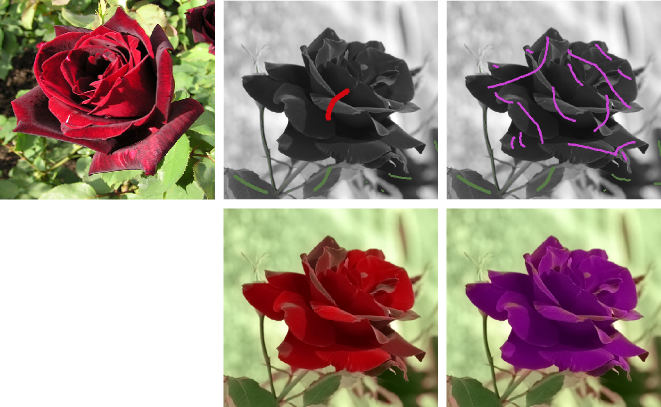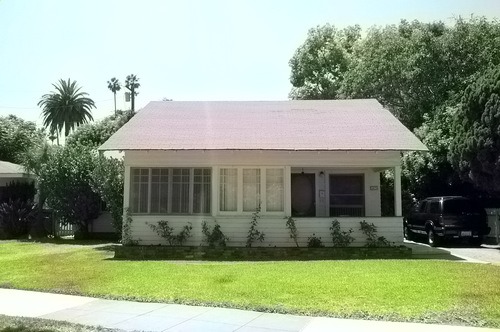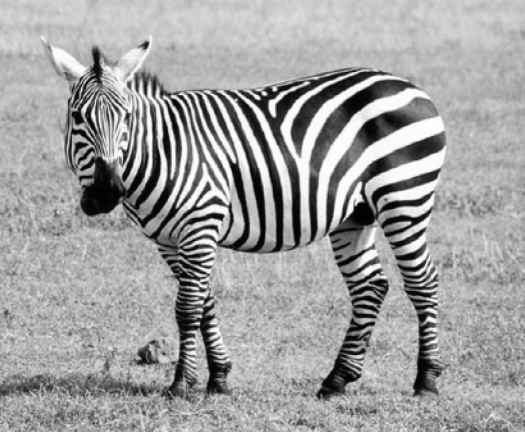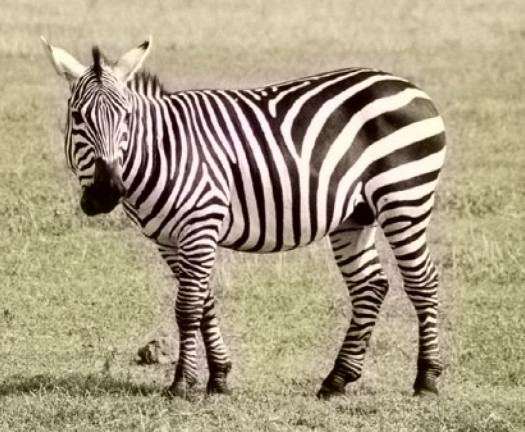Image and video colorization
Video Colorization
We propose a novel automatic frame-to-frame propagation approach and an interactive correction method within a unique variational framework. The proposed method propagates colors from an initial colorized frame to the whole grayscale video sequence. The automatic propagation results may be visually unsuitable in some cases. To overcome this limitation, a spatio-temporal functional with a user-guided correction is introduced.
VIDEOS
Associated publications
Collaborative Image Colorization
We propose a new framework that unifies manual and examplar-based colorization approaches into a joint variational model. Our approach is able to take into account information coming from any colorization method among these two categories  |
Code
- Colociel
Fabien Pierre, Jean-François Aujol, Aurélie Bugeau, Vinh-Thong Ta
Dépôt Agence de Protection des Programmes N° IDDN.FR.001.080021.000.S.P.2016.000.2100, 2016
Associated publications
Variational Exemplar-based Image Colorization
The input color data comes from a source image considered as a reference image.
Reconstructing the missing color of a grayscale pixel is here viewed as the problem of automatically selecting
the best color among a set of colors candidates while simultaneously ensuring the local spatial coherency of
the reconstructed color information. To solve this problem,
We propose a variational approach where a specific energy is designed to model the color selection and the spatial constraint
problems simultaneously. The contributions of this paper are twofold: first, we introduce a variational formulation modeling
the color selection problem under spatial constraints and propose a minimization scheme which allows computing a local minima
of the defined non-convex energy. Second, we combine different patch-based features and distances in order to construct
a consistent set of possible color candidates. This set is used as input data and our energy minimization allows to automatically
select the best color to transfer for each pixel of the grayscale image.

|

|

|

|
Associated publications
- F. Pierre, J.-F. Aujol, A. Bugeau, N. Papadakis, V.-T. Ta, - Luminance-Chrominance Model for Image
Colorization - SIAM Journal on Imaging Sciences, Volume 8, Issue 1, 2015.

- F. Pierre, J.-F. Aujol, A. Bugeau, N. Papadakis, V.-T. Ta - Exemplar-based colorization in RGB color
space - IEEE International Conference on Image Processing (ICIP), 2014.

- A. Bugeau, V.-T. Ta, N. Papadakis, - Variational Exemplar-Based Image Colorization - IEEE Transactions on Image Processing (TIP), Volume 33, Issue 1, 2014.

Patch-based Image Colorization
We propose a simple patch-based image colorization based on an input image as a color example. First, we introduce a general colorization model in which many methods of literature can be casted within this framework. Second, we describe our method which is based on patch descriptors of luminance features and a color prediction model with a general distance selection strategy. We also propose to perform a Total Variation (TV) regularization on the colorized image to ensure the spatial color coherency of the final result.
 |
 |
Code
Associated publications